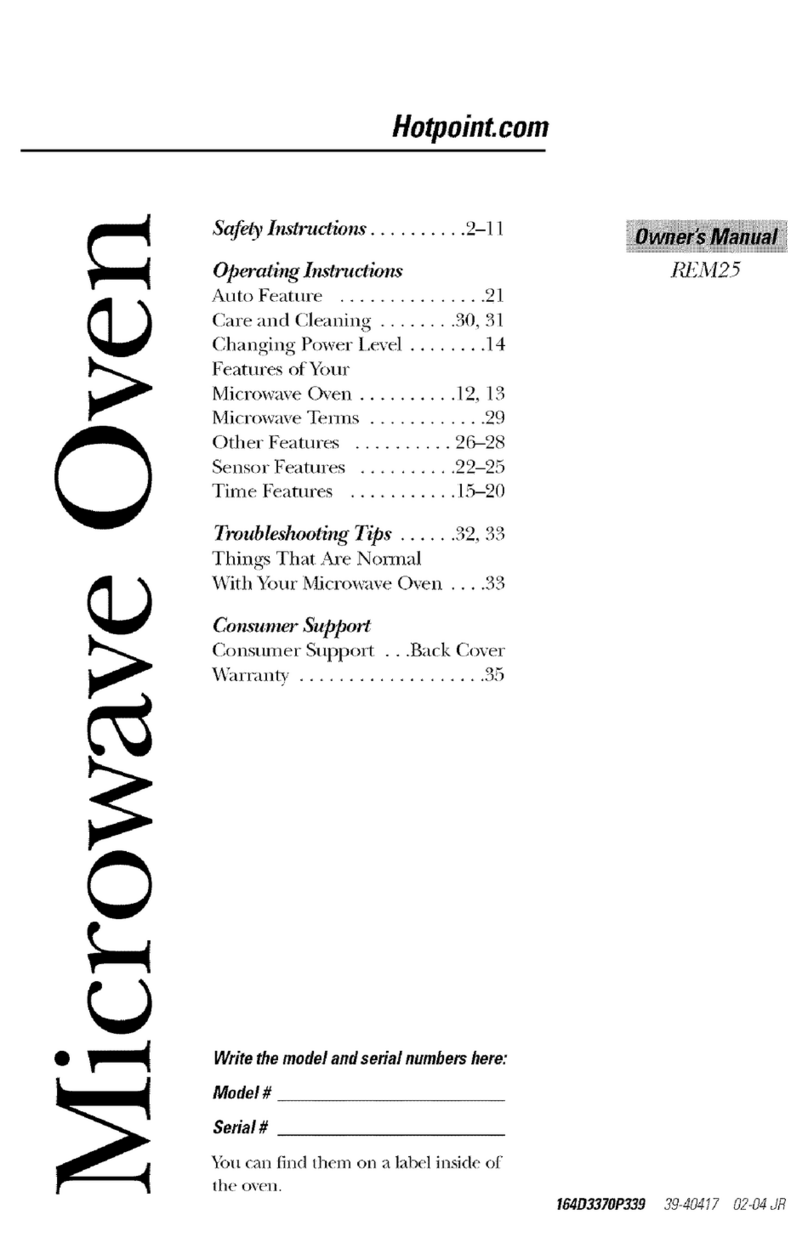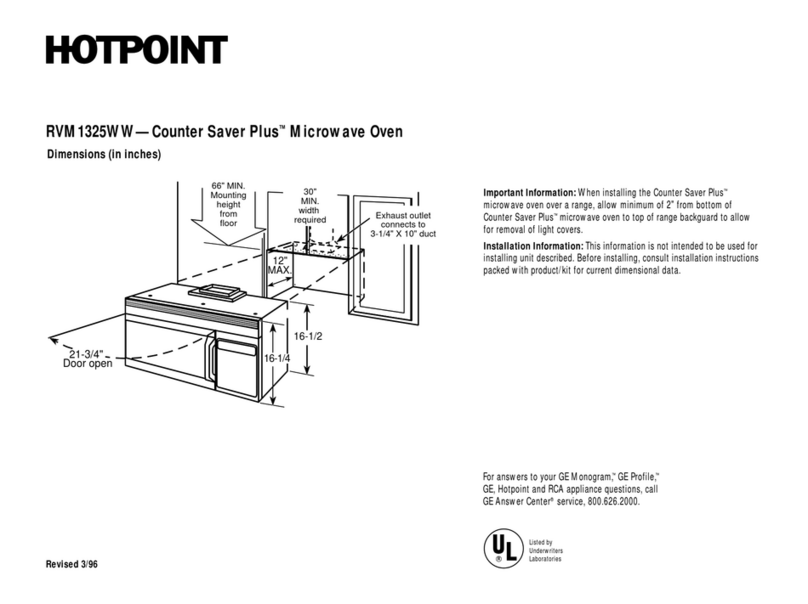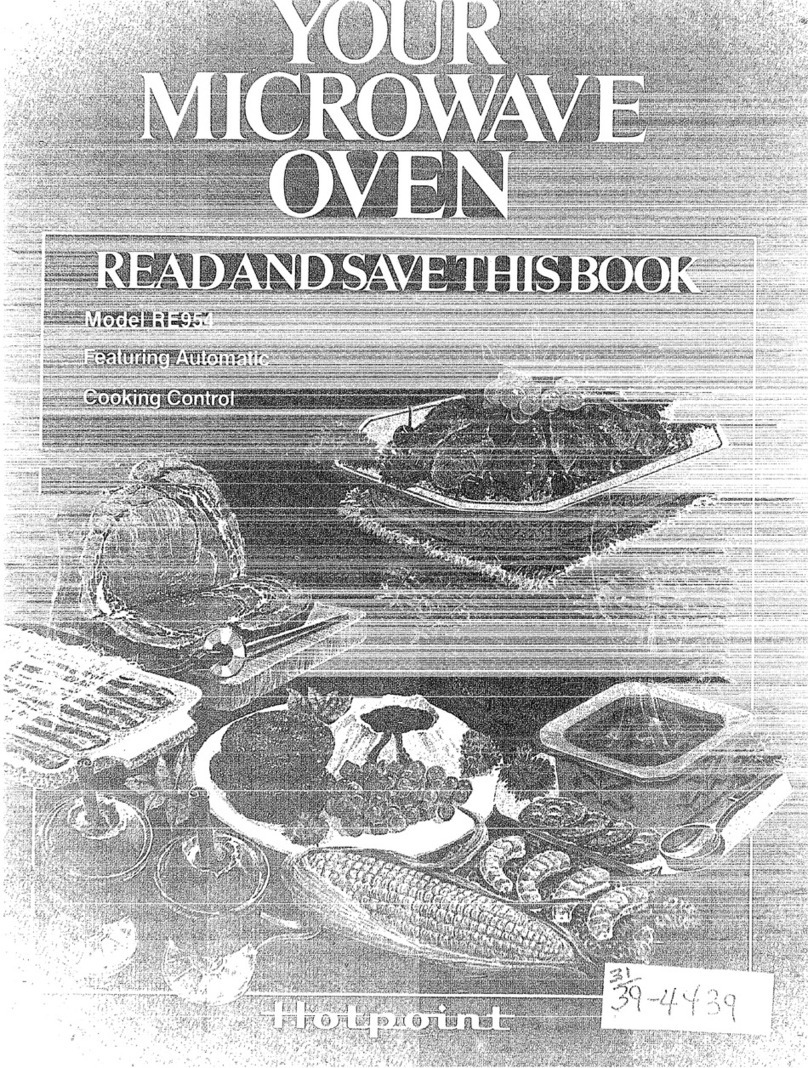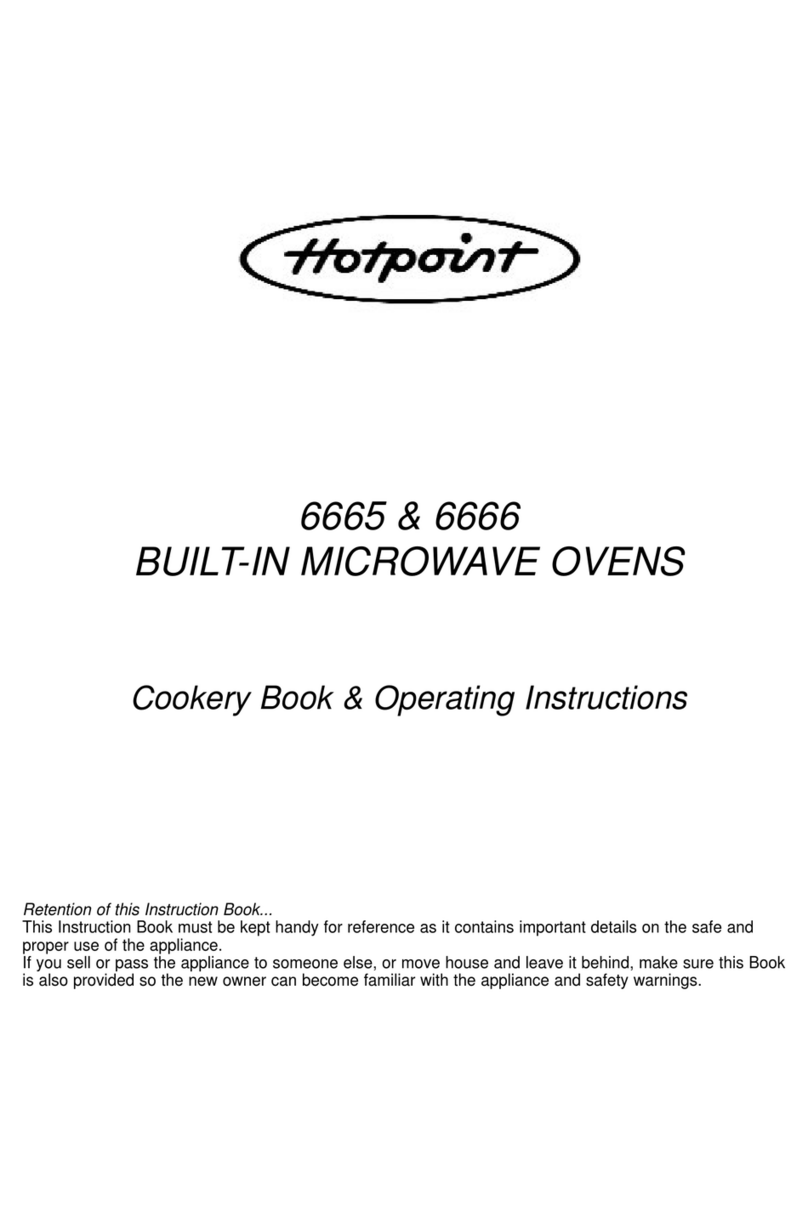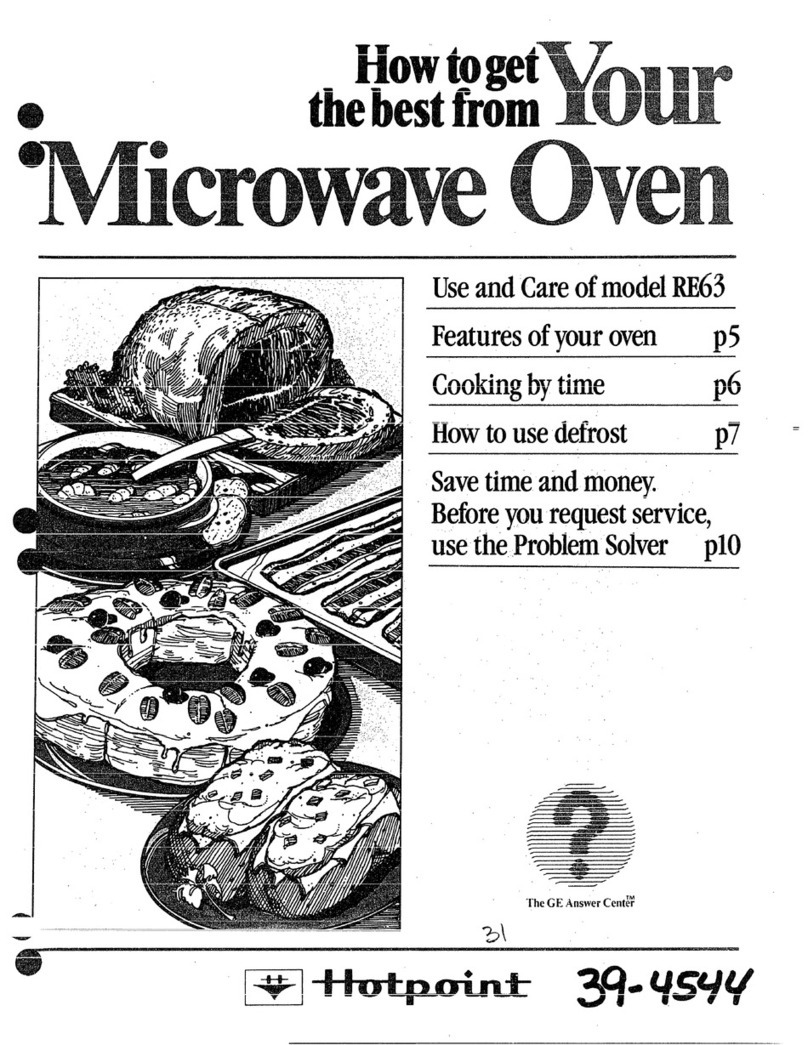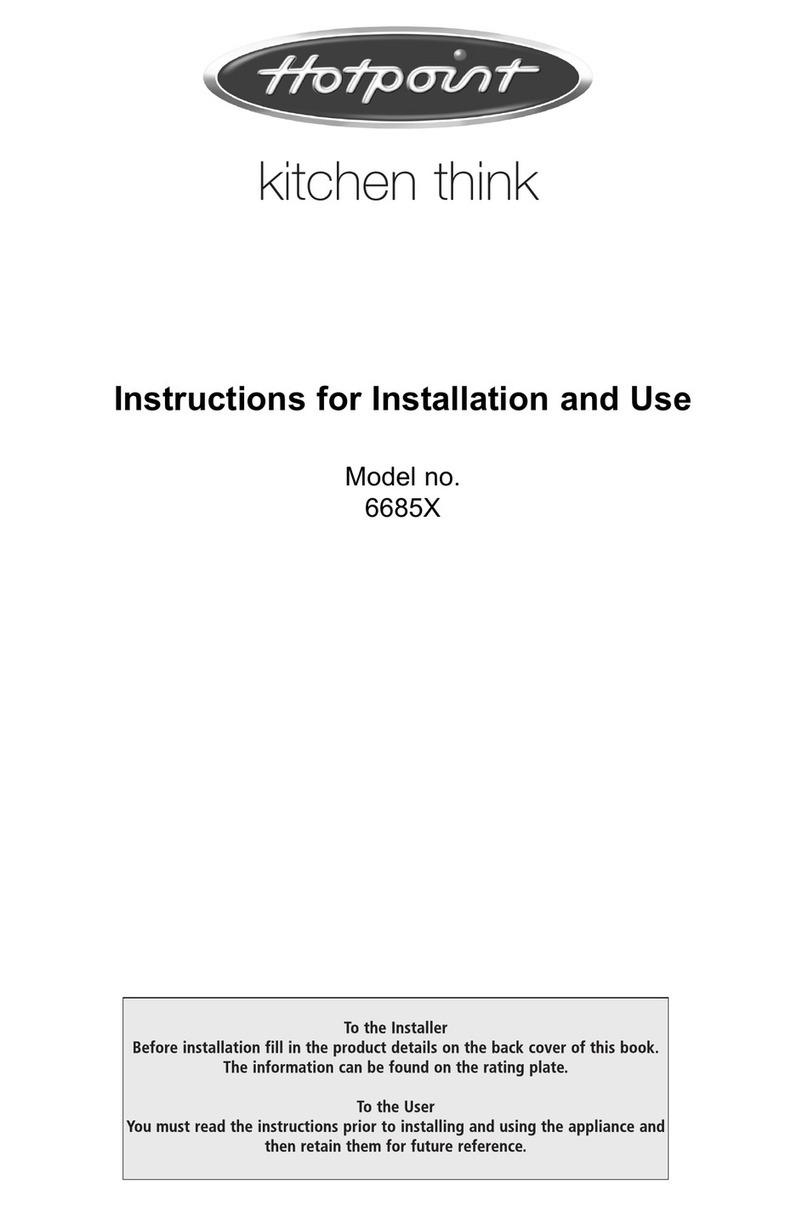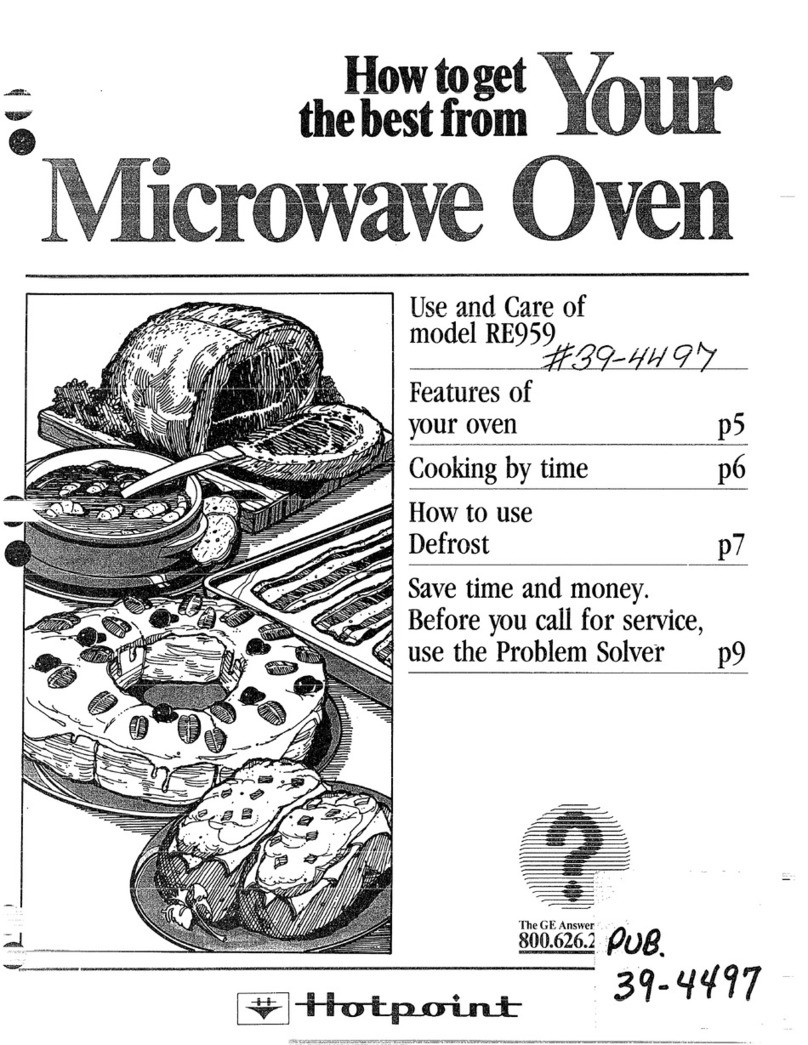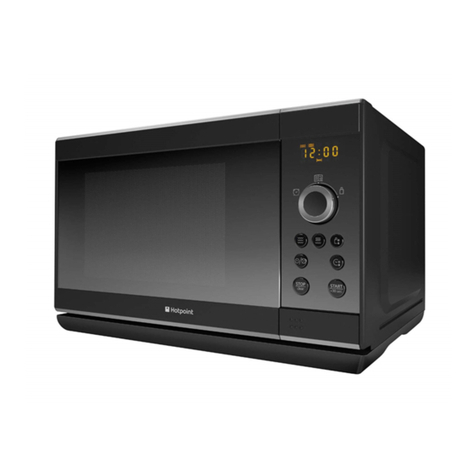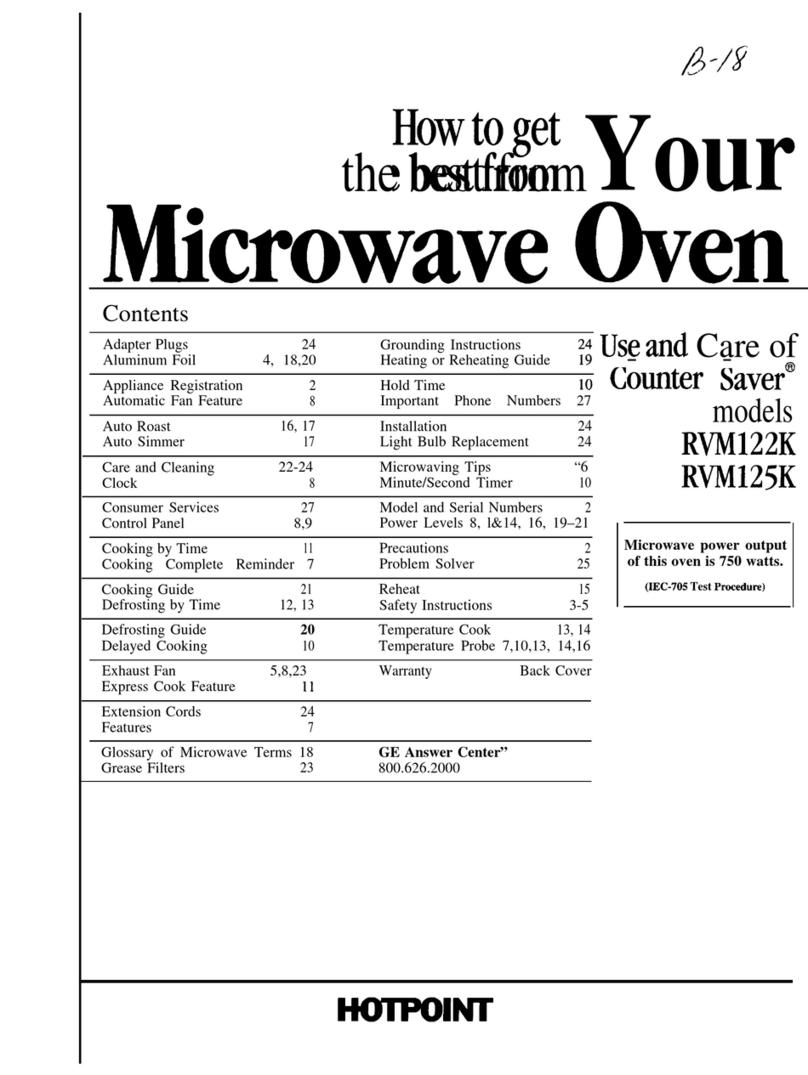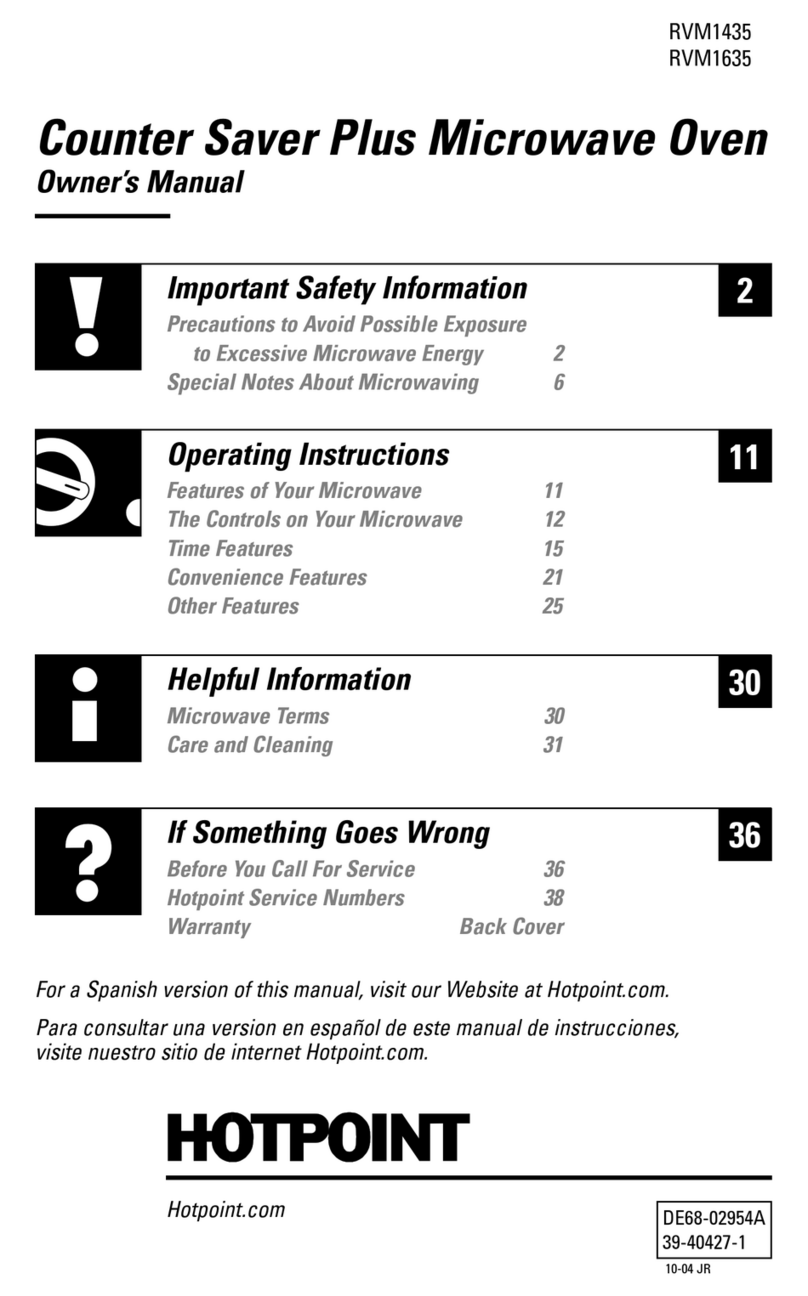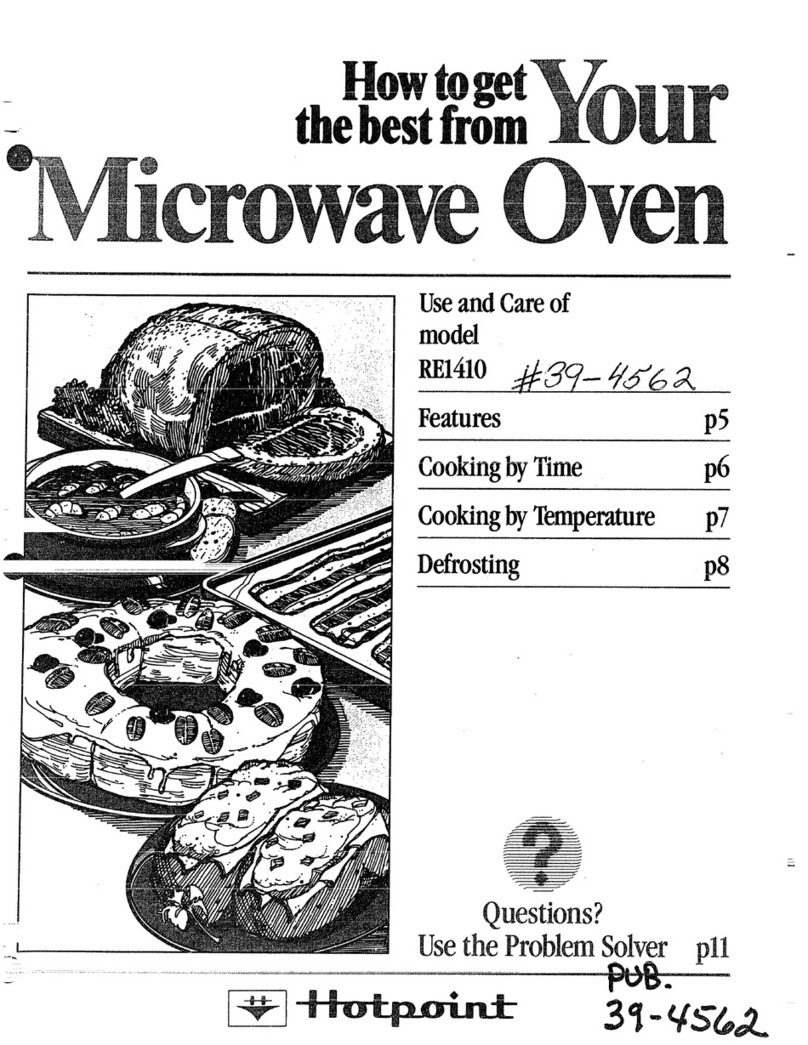(continued)
sDon’t defrostfrozenbever-
agesin narrow necked bottles;
especially carbonated ones.
Evenif the container is opened,
pressure can build up, This can
causethe container to burst,
resulting in injury.
eUse metal only as directed in
Cookbook. Metal strips as used
on meat, roasts are helpful when
used as shown in Cookbook.
TV dinners may be cooked in
metal trays. However, when
using metal in microwave oven,
keep metalat leastl-inch away
fromsides of oven.
eCooking utensils may
become hot because of heat
transferred from the heated
food. This is especially true if
plastic wrap has been covering
the top and handles of the
utensil. Potholders may be
/
needed to handle the uensil.
69Sometimes,the ovenfloor
can becometoo hot to touch.
Be careful touching the floor
during and after cooking.
eDo not useany thermometer
in food you are microwaving
unless that thermometer is
designed or recommended for
use in the microwave oven.
eRemovethe temperature
probe from the ovenwhen not
usingit to cook with. Ifyou leave
the probe inside the ovenwithout
inserting it in food or liquid, and
turn on microwave energy, it can
create electrical arcing in the
oven, and damage oven walls.
ePlastic Utensils—Plastic
utensils designed for microwave
cooking are very useful, but
should be used carefully. Even
microwave plastic may not be as
tolerant of overcooking condi-
tions as are glass or ceramic
materials and may soften or
char if subjected to short periods
of overcooking. In longer expo-
sures to overcooking, the food
and utensils could ignite. For
these reasons: 1) Use micro-
wave plastics only “and use
them” in strict compliance with
the utensil manufacturer’s
recommendations. 2) Do not
subject empty utensils to micro-
waving. 3) Do not permit children
to use plastic utensils without
complete supervision.
eWhen cooking pork follow
our directions exactly and
always cook the meatto at least
170°. This assuresthat, in the
remote possibility that trichina
may be present in the meat, it
will be killed and meat will be
safe to eat.
eBoilingeggs (inand out of
shell)isnot recommendedfor
microwave cooking. Pressure
can build up inside egg yolk and
may cause it to burst, resulting
in injury.
eFoodswith unbrokenouter
“skin”such as potatoes, hot
dogs or sausages,tomatoes,
apples, chicken livers and other
giblets, and eggs (seeabove)
should be pierced to allow
steam to escape during cooking.
e“Boilable”cookingpouches
and tightlyclosedplasticbags
should be slit, pierced or vented
as directed in Cookbook. If they
are not, plastic could burst dur-
ing or immediately after cooking,
possibly resulting in injury. Also,
plastic storage containers should
be at least partially uncovered
becausethey form atight seal.
When cooking with containers
tighi!y covered with plastic wrap,
remove covering carefu!!y and
direct steam away from hands
and face.
-n-E HOOD:
eHaveit installedand properly
groundedby aqualifiedinstaller.
Seethe special installation book-
let packed with the microwave
oven.
eThe ventfan in yourCounter-
saver’Movenwilloperateautomati-
cally undercertainconditions
(seeAutomaticFanFeature,page
7). Whilethe fan isoperating
cautionis requiredto prevent
the startingandspreadingof
accidentalcookingfireswhile
the ventfan isin use.Forthis
reason:
—Never leavesurfaceunits
unattendedat highheatsettings.
Boilover causessmoking and
greasy spillovers that may ignite
and spread if vent fan is oper-
ating. To minimize automatic fan
operation, useadequatesized
utensils and use high heatset-
tings only when necessary.
—In the eventof agreasefire,
smother flaming pan on surface
unit by covering pan completely
with well-fitting lid, cookie sheet
or flat tray.
—Neverflamefoodsunderthe
ovenwith the ventfan operating
because it may spread the
flames.
—Keephood and greasefilters
clean,according to instructions
on pages 18and 19,to maintain
good venting and avoid grease
fires.



